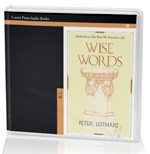Thwack
So for all you bread connoisseurs or those aspiring to be such, I thought I'd give you some inside information. There I am. It's 2:15am (give or take a few hours), and I'm waiting for my dough to rise. I decide to be studious and resourceful with my time, and I pull out a fancy looking book on the art of baking fine breads. The key to good bread is timing and temperature. That's not too hard to understand at the beginning, but believe me, it's a whole lot more mysterious once you get started. Anyways, there I am reading my book and trying to get my bread to look and taste as good as the pictures and descriptions they have in the fancy book. I get to the section on temperature. This book is fancy. It has chemical equations and math I haven't seen since high school. The chemicals do magic things, and the book explains this in big words. I keep reading. Depending on the bread, a finished loaf probably ranges from around 180 to 210 degrees Fahrenheit. So far so good. The most accurate method of testing the loaf's temperature is with a probe thermometer, but as it turns out, the book explains that the internal temperature can also be accurately detected using the fail-proof thwack method. Yes, that's right. All you have to do is remove the loaf to a cooling rack and turn it on its side. Then thwack the bottom of your loaf, and if it makes a hallow sound, it's done. Who needs digital thermometers when there's the thwack method?
Monday, May 26, 2003
Posted by Toby at 11:40 PM
Subscribe to:
Post Comments (Atom)

























No comments:
Post a Comment